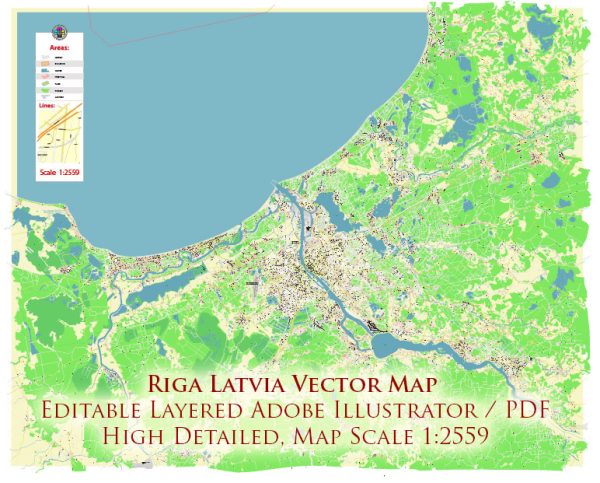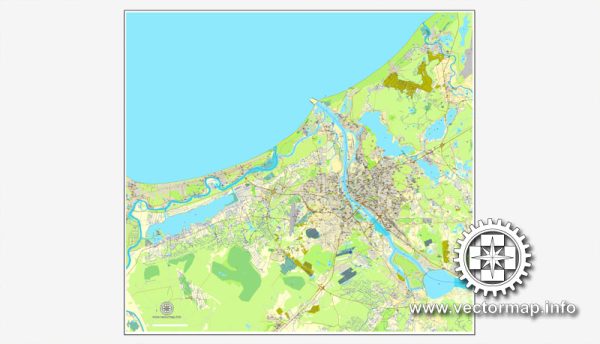Riga, the capital and largest city of Latvia, has a rich history of urban development that spans over eight centuries. Here’s a brief overview of the key stages in the city’s history of urban development:
- Foundation and Medieval Period (12th–16th centuries):
- Riga was founded in 1201 by Bishop Albert, a German cleric, as a strategic trading outpost at the crossroads of Western Europe and the East.
- The city quickly became a member of the Hanseatic League, a powerful medieval trading alliance, which significantly influenced its economic and cultural development.
- During this period, Riga’s Old Town (Vecrīga) was established, characterized by narrow, winding streets and well-preserved medieval architecture. The city’s skyline is dominated by the Riga Castle and the spires of numerous churches.
- Swedish and Russian Rule (17th–19th centuries):
- Riga experienced various rulers, including the Swedes and Russians, during this period. The city’s architecture was influenced by different cultural and architectural styles.
- Baroque and Rococo elements were added to the existing medieval structures, giving Riga a diverse architectural landscape.
- The 18th century saw the construction of the Riga Cathedral and the expansion of the city beyond the medieval walls.
- 19th Century – Industrialization and Growth:
- The 19th century marked a period of industrialization, and Riga became a major industrial and commercial hub within the Russian Empire.
- The city expanded beyond the confines of the medieval walls, and new districts with eclectic architectural styles emerged.
- Art Nouveau architecture flourished in the early 20th century, and Riga is now known for having one of the largest collections of Art Nouveau buildings in Europe.
- Interwar Period (1918–1940):
- After World War I, Latvia gained independence, and Riga became the capital of the newly established Republic of Latvia.
- The city continued to grow, and modernist architectural influences became more prominent.
- The Central Market, housed in repurposed German Zeppelin hangars, is an example of innovative urban planning during this period.
- Soviet Era (1940–1991):
- Riga underwent significant changes during the Soviet era, with the construction of large housing blocks and industrial complexes.
- While some historic buildings were preserved, others were demolished to make way for Soviet-style architecture.
- The city expanded further, and Soviet planning principles influenced the layout of residential areas and infrastructure.
- Post-Soviet Independence (1991–present):
- Since gaining independence in 1991, Riga has seen a renewed focus on preserving its historical heritage.
- The Old Town has been extensively renovated, and efforts have been made to restore and maintain historical buildings.
- Contemporary architecture has also made its mark, with modern structures blending with the city’s rich historical fabric.
Today, Riga stands as a vibrant European capital, showcasing a blend of medieval, Art Nouveau, and contemporary architecture that reflects its diverse and dynamic history. The city’s historic center is a UNESCO World Heritage site, attesting to the significance of its urban and architectural heritage.



 Author: Kirill Shrayber, Ph.D.
Author: Kirill Shrayber, Ph.D.